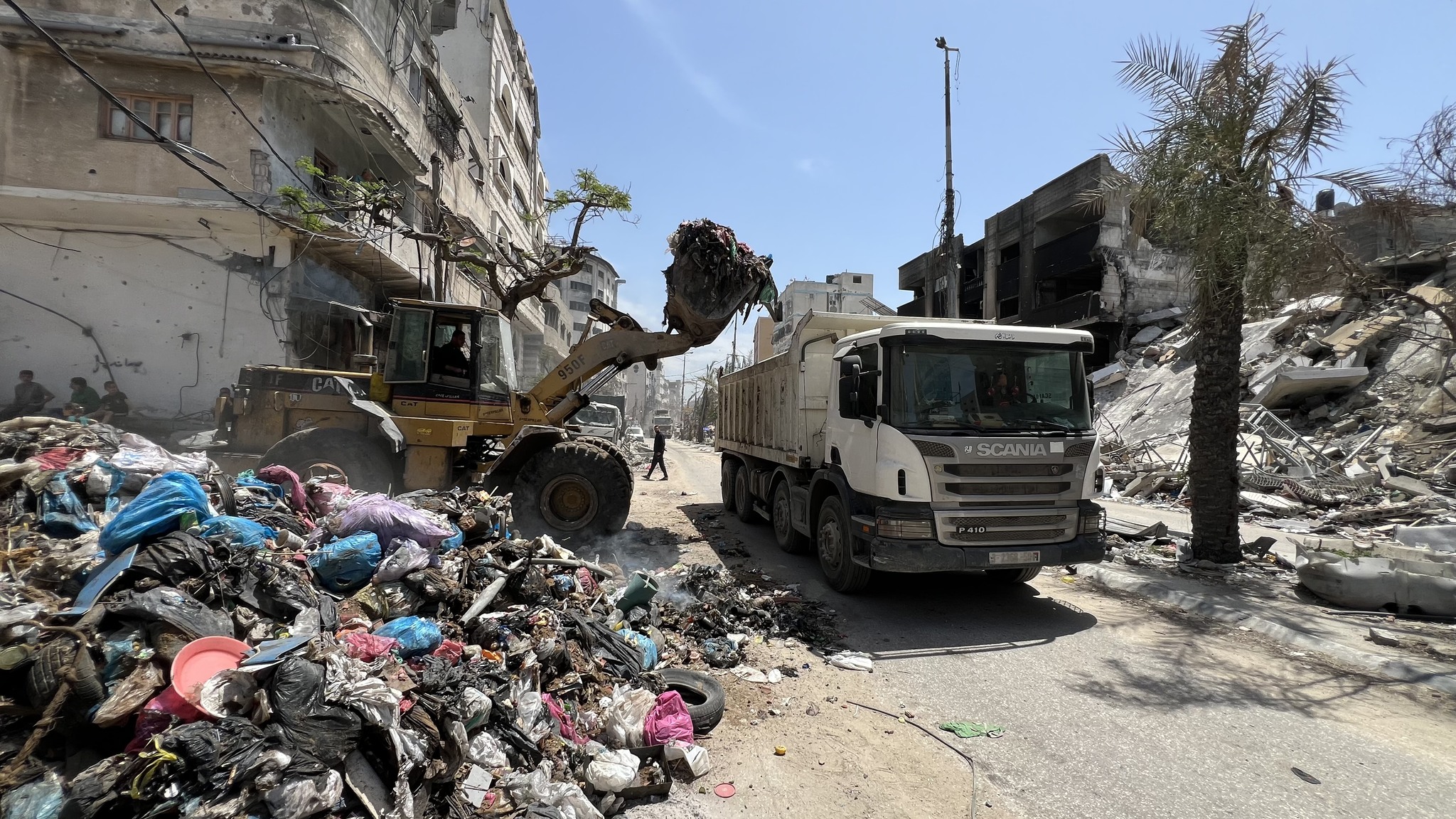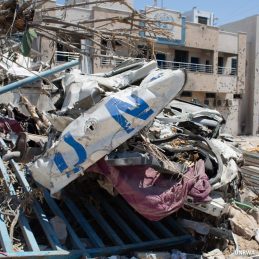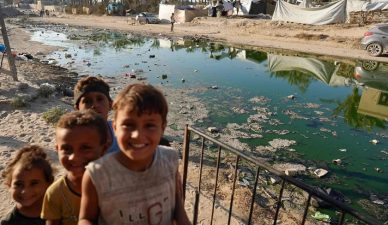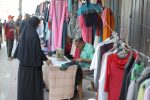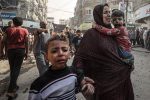GAZA, (PIC)
With the ongoing Israeli aggression on Gaza for the past eight months, which has caused widespread destruction of infrastructure and all relevant authorities in Gaza, especially those responsible for sanitation and sewage, the accumulation of waste in the streets and around displaced persons’ camps has become another disaster threatening the lives of Gaza’s residents.
Skin diseases, deadly gastrointestinal diseases such as diarrhea, hepatitis, and other effects of pollution and poor sanitation, along with foul odors and mosquitoes, are just a few of the consequences. The crisis is worsening amid international warnings of disaster and calls from concerned parties in Gaza to stop the aggression and allow the necessary equipment to be put back into operation to restore environmental protection systems, particularly the Gaza Municipality, which has been extensively targeted by the Israeli occupation army with destruction of all its equipment and infrastructure.
Despite the dire conditions faced by the people of Gaza due to the waste accumulation, there are initiatives here and there, utilizing the limited resources of the Gaza Municipality, providing a glimmer of hope to take further steps towards overcoming the crisis, overcoming obstacles, and maintaining Gaza’s cleanliness and the health of its residents through the combined efforts of everyone.
A life unworthy of Gaza’s people and humanity
In a painful scene, a child from Gaza speaks out – surrounded by piles of waste near the tents of the displaced – to express the magnitude of the disaster caused by the ongoing Israeli aggression, which destroyed Gaza’s infrastructure and intentionally crippled the sanitation capabilities of the Gaza Municipality to tighten the noose on Gaza’s residents and create a repelling environment amid a forced displacement conspiracy.
The child says, “This garbage brings us mosquitoes and causes us all to scratch (our skin), not to mention the foul smells.”
Expressing his strong rejection of the environment created by the aggression with his pure, clean nature nurtured in Gaza, he says, “We are not cattle to live next to garbage. We are the people of Gaza; we were clean. Is this how it ends for us?”
The child’s mother expresses her deep anger over the continued accumulation of waste around the displaced persons’ tents due to the ongoing aggression, saying, “We have small children, and this sewage causes them diseases, which require hospitals and treatment, something unavailable at present due to the war.”
She adds, “The children need food and drink, which are unavailable, and on top of all that, ‘the bad smell isn’t good.’ She calls out to the world: ‘Please, pay attention to us.'”
Ongoing community efforts to maintain cleanliness
One of the volunteers from the popular committees confirms that they are continuing to cooperate with the Gaza Municipality in removing garbage and cleaning the streets.
He pointed out that this effort requires the role of the residents and complete national cooperation with the municipality, noting that what remains now are simple tools that need popular, communal, and charitable support to maintain this environment and safeguard the community.
He continued, “We will continue and exert our efforts as popular committees with the municipality for this significant national work that provides services to all Palestinians in an integrated manner.”
Khaled Khairuddin, head of the sanitation department in the Gaza Municipality, expressed his deep gratitude to the popular committees for their assistance in maintaining Gaza’s cleanliness.
He said, “We thank the citizens for their efforts to maintain cleanliness despite the lack of resources and the difficult war we are facing.”
Removal of 15,000 tons of waste
The Gaza Municipality has managed to collect and remove around 15,000 tons of waste over the past few days as part of projects implemented in stages in cooperation with the Arab International Committee for the Reconstruction of Palestine and the Australian Charitable Works Authority. These efforts aim to mitigate the health and environmental disaster facing the city.
In a statement, the municipality explained that the collected and removed waste amounts to 15,000 tons out of a total of 100,000 tons that have been piling up in the streets since the start of the Israeli aggression. The municipality confirmed that the remaining waste will be collected as new projects become available.
The municipality stated that the collection process targets the most densely populated areas with waste, which are accessible and inhabited by citizens.
The Israeli occupation army prevents municipal crews from reaching the main solid waste dump in the Juhr area southeast of Gaza City and deliberately destroys waste collection vehicles, causing a major disaster and waste accumulation in the streets.
The municipality appealed to all institutions, international organizations, and concerned parties for urgent intervention to save the situation in the city and enable the municipality to provide essential services to citizens.
Sewer blockage and contaminated water
In a report earlier this month, the United Nations acknowledged the health disaster caused by the ongoing aggression in the Gaza Strip, which resulted in massive destruction of service facilities, leading to waste spread and sewage accumulation among the tents of displaced people in Deir al-Balah.
The United Nations Development Program warned of an imminent environmental and health crisis due to the accumulation of waste and garbage piles.
The World Health Organization has repeatedly warned about the impact of the lack of toilets and sanitation services on people in Gaza, many of whom cannot access health facilities.
The UN organization noted that with the approach of summer, rising temperatures in the Gaza Strip exacerbate the situation. This was confirmed by Kamal Al-Ali, a Palestinian displaced from the Nuseirat camp in central Gaza to Deir al-Balah, who said that this situation “is unbearable for children” in particular, and that the rising temperatures and their consequences cause them illnesses.
The organization pointed out that the large crowding inside and outside the shelters, combined with poor sanitation, led to widespread contamination.
The contamination of sewage has led to “the emergence of diseases such as hepatitis and some other viral diseases,” in addition to severe food contamination due to the lack of washing water, which has also resulted in the spread of diseases.
The United Nations Office for the Coordination of Humanitarian Affairs recently pointed to the worsening serious sewage crisis with the approach of summer, especially after the collapse of the sewage treatment system.
Warning of increasing risk of infectious diseases
The Euro-Mediterranean Human Rights Monitor previously warned of the increasing risk of the spread of deadly infectious diseases in the Gaza Strip, especially among vulnerable groups, as residents face an escalating health disaster due to the continued genocidal crime committed by Israel since October 7.
The Euro-Med noted that health and environmental disasters are rapidly worsening due to the ongoing destructive Israeli military attacks, which have serious and catastrophic implications for public health and the environment. It warned that children, especially newborns, the elderly, and people with chronic diseases, are the most affected by this health disaster.
270,000 Tons of accumulated waste
The Euro-Med highlighted aspects of the health and environmental impacts of the war, pointing to the accumulation of over 270,000 tons of solid waste in the Gaza Strip, according to United Nations estimates. This waste is spread across residential areas, roads, roundabouts, and hospitals, including medical waste, due to the destruction of waste management facilities and the waste collection and treatment system in the Strip. This poses an environmental and health disaster in itself, threatening to become another source of the spread of diseases and epidemics, which is already becoming evident in the overcrowded displacement camps, especially with the destruction of water and sanitation infrastructure.
In Gaza City alone, about 90,000 tons of waste have accumulated significantly in the streets and around shelters, leading to partial and complete road closures in some areas, in addition to the spread of harmful insects and rodents that cause diseases and epidemics.
The Euro-Med noted that the presence of thousands of corpses in the streets and under the rubble of homes, being gnawed by cats and dogs, adds another factor for the spread of epidemics and infectious diseases, threatening public health and the environment in the Gaza Strip.
Health authorities in the Gaza Strip have recorded around one million cases of infectious diseases, without having the necessary medical resources to treat them, including thousands suffering from viral hepatitis.
According to a comprehensive new analysis by the World Food Program, at least 90% of children under the age of five are suffering from one or more infectious diseases. About 70% had diarrhea in the past two weeks, a 23-fold increase compared to the baseline in 2022.

